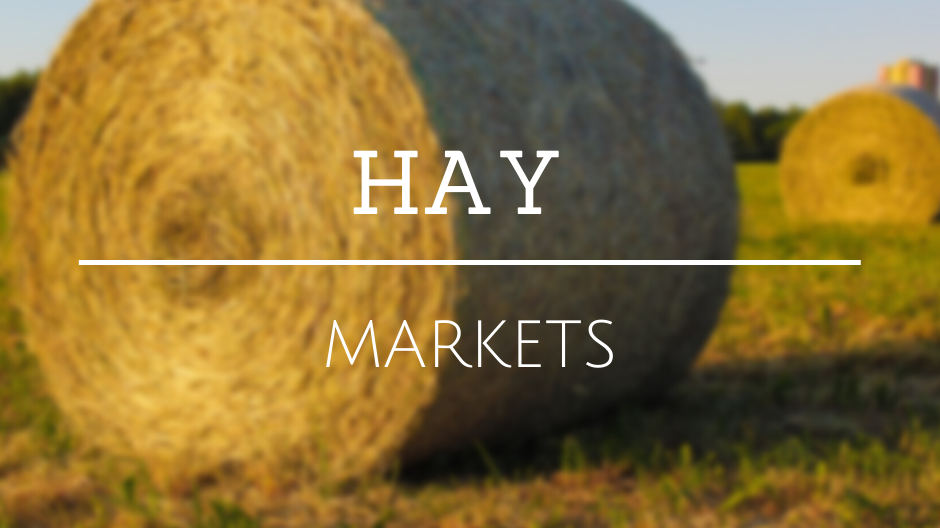Colorado—In the Nov. 30 report, compared to last report, trade activity light on moderate demand. The bulk of activity remains in the horse hay markets. Horse hay sold mostly steady.
Missouri—In the Nov. 30 report, compared to last report, hay prices are steady, the supply of hay is light to moderate and demand is moderate. The first snow of the season fell over the northern half of the state this past week unofficially kicking of the feeding season for many producers. Hay movement has picked up a bit with trucks being a common sight on the roads again.
Nebraska—In the Nov. 30 report, compared to last report, all reported hay sales sold steady. Demand was light to moderate. Mostly warm and open winter has helped keep the hay market rather stagnate. There are more people wanting to sell hay than people wanting to buy currently. Being in Nebraska ole Man winter could change that in a blink of an eye where everyone is looking for forage to buy. Corn harvest is winding down with limited amount still to combine across the state.
Oklahoma—In the Nov. 21 report, compared to the last report, not much has changed over the past two weeks. The hay trade is still slow. The trades that are being made are from long-time clients. Oklahoma has a larger hay inventory than usual. The larger hay inventory has caused the market to be a buyer’s market. Next report will be released Dec. 8.
Texas—In the Dec. 1 report, compared to the last report, hay prices are mostly steady across the majority of the regions with quality and freight being the largest determinants on price. Trading activity was limited due the holiday last week. Cooler weather moved into the majority of the trading regions accompanied by some form of precipitation with the exception of the Panhandle. According to the Texas Crop and Weather report, extreme drought conditions continued to affect crop and pasture conditions in the region negatively. Any additional moisture from precipitation, including snow, will be highly beneficial for the early growth of cool-season small grain crops. Next report will be released Dec. 15.
South Dakota—In the Dec. 1 report, compared to last report, alfalfa hay steady. Moderate demand for alfalfa, good demand for high quality grass to start calves on feed with. Very mild weather, temps in the 40s and 50s, beef cows are turned out on stalk fields east river, winter pastures west river. This mild winter season, so far, is really helping to stretch hay supplies. Dairy operators continue to deal with low milk prices and aren’t pushing the hay market because of it. Corn stalk baling pretty much complete, as is corn harvest except for some areas in the northern part of the state are wrapping up now.
New Mexico—In the Nov. 24 report, compared to last report, alfalfa hay steady. Trade active, demand good. The the state is 73% complete with fifth cutting, 54% with sixth cutting. Most parts of the state are wrapping up harvest for the season. According to New Mexico Crop Progress report as of Nov. 12. Hay and roughage supplies improved slightly from the previous week but remained in worse condition than prior years. Hay and roughage supplies were observed to be 25% very short, 42% short, 30% adequate, and 3% surplus. At 14% very short, 37% short, 45% adequate, and 4% surplus, stock water supplies were on par with the 5-year average. This is the last report for the season, reports will resume in spring 2024.
Wyoming—In the Nov. 30 report, compared to last report, all reported hay sales sold steady. Demand was light for large square bales with good demand for small square bales. Some snow around the state with cold temperatures. Slight warm-up in the forecast for most areas of the state. Quite a lot of poorer or off quality hay across the region and every buyer knows it. But it is a long time till next summer when turn out occurs so demand might pick up for the cow type hay.
Montana—In the Dec. 1 report, compared to last report, hay sold steady to $10 lower. Hay sales were light to moderate this week, with slightly more interest seen. Lots of rancher to rancher sales have been seen over the past few weeks. Many ranchers are asking $150 for hay in rounds, but very few sales have been seen at that price. Large hay producers are being squeezed as rancher to rancher sales are comprising many of the hay sales. Many larger hay producers are shipping hay out of the state with most hay shipping east into Minnesota, Iowa and Wisconsin. Lower diesel prices has allowed freight to cheapen and helped move hay out of the state. Demand for hay to ship north to Canada has lightened as a strong dollar makes it more difficult to ship goods into Canada. No Canadian hay was reported this week. Mild weather continues to curb demand within the state as many locations still have cows out grazing on fall grass. Winter has been open across much of the state. Some sales were reported for tax proposes as high calf prices have ranchers needing to spend money, however ranchers seem unwilling to give any premium for hay as many try to recoup from high hay prices over the last two years. Demand for straw has lightened as heavy straw supplies cont



